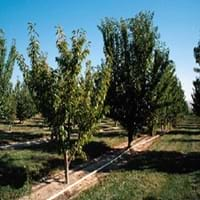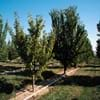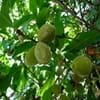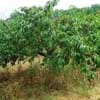Life Span
Perennial
Perennial
Type
Fruit
Flowering Plants, Fruits, Trees
Origin
Hybrid origin, Western Asia
Central Asia
Types
Sweet cherry, Black cherry, Virginia bird cherry
Aceymac apple, Bailey Sweet apple, Dabinett apple, Nehou apple
Number of Varieties
Not Available
Habitat
Terrestrial
Hillside
USDA Hardiness Zone
5-8
5-8
Sunset Zone
4, 5, 6, 7, 15, 16, 17
A1, A2, A3, 8, 9, 10, 11, 12, 13, 14, 15, 16, 17, 18, 19, 20, 21, 22, 23, 24
Habit
Upright/Erect
Oval or Rounded
Flower Color
Not Available
White
Flower Color Modifier
Bicolor
Not Available
Fruit Color
Not Available
Green, Red
Leaf Color in Spring
Not Available
Dark Green
Leaf Color in Summer
Not Available
Green
Leaf Color in Fall
Not Available
Brown, Green, Light Yellow
Leaf Color in Winter
Light Green
Not Available
Plant Season
Spring, Summer, Fall
Spring
Sunlight
Full Sun, Partial Sun
Full Sun, Partial shade
Growth Rate
Medium
Medium
Type of Soil
Clay, Loam, Sand
Loamy
The pH of Soil
Acidic, Neutral
Neutral
Soil Drainage
Average
Well drained
Bloom Time
Spring
Fall, Summer
Tolerances
Drought
Drought
Where to Plant?
Ground
Ground
How to Plant?
Budding, Grafting
Grafting, Seedlings, Transplanting
Plant Maintenance
Medium
Medium
Watering Requirements
Average Water Needs
Medium
In Summer
Lots of watering
Lots of watering
In Spring
Moderate
Moderate
In Winter
Average Water
Average Water
Soil pH
Acidic, Neutral
Neutral
Soil Type
Clay, Loam, Sand
Loamy
Soil Drainage Capacity
Average
Well drained
Sun Exposure
Full Sun, Partial Sun
Full Sun, Partial shade
Pruning
Prune in winter, Remove branches that rub together, Remove damaged leaves, Remove dead branches, Remove dead leaves, Remove dead or diseased plant parts
Prune when plant is dormant, Remove dead or diseased plant parts
Fertilizers
All-Purpose Liquid Fertilizer, Fertilize in early spring
All-Purpose Liquid Fertilizer
Pests and Diseases
Red blotch
Aphids, Canker, Caterpillars, Powdery mildew, Root rot
Plant Tolerance
Drought
Drought
Flower Petal Number
Not Available
Single
Foliage Texture
Not Available
Medium
Foliage Sheen
Not Available
Matte
Attracts
Aphids, Birds, Woodpeckers
Birds
Allergy
Not Available
Mouth itching, Throat itching
Aesthetic Uses
Not Used For Aesthetic Purpose
Not Used For Aesthetic Purpose
Beauty Benefits
Anti-ageing, Good for skin and hair, Promotes healthy skin, Skin cleanser
Not Available
Environmental Uses
Air purification, Food for birds, Food for insects, Nesting sites for birds, Shadow Tree, Windbreak
Air purification
Medicinal Uses
Anemia, anti-cancer, Arthritis, Cardiovascular problems, Migraines, Muscle Pain, Weight loss
Cancer, constipation, Diabetes, Diarrhea, Dysentry, Fever, Heart problems, Tooth ache
Part of Plant Used
Fruits
Fruits
Other Uses
Food for animals, Food for insects, Used for its medicinal properties
Used As Food, Wood is used for making furniture
Used As Indoor Plant
No
No
Used As Outdoor Plant
Yes
Yes
Garden Design
Edible, Fruit / Fruit Tree, Shade Trees, Topiary / Bonsai / Espalier
Fruit / Fruit Tree, Shade Trees, Showy Tree
Botanical Name
PRUNUS avium 'Bing'
Malus domestica
Common Name
Bing Cherry, Sweet Cherry
Apple Tree
In Hindi
Bing Cherry Tree
सेब का वृक्ष
In German
Bing Kirschbaum
Apfelbaum
In French
Bing Cherry Tree
Pommier
In Spanish
Bing Cherry Tree
Manzano
In Greek
Bing Cherry Tree
μηλιά
In Portuguese
Cherry Tree Bing
Macieira
In Polish
Bing Cherry Tree
jabłoń
In Latin
Bing Cherry ligno
Arbore
Phylum
Magnoliophyta
Magnoliophyta
Class
Magnoliopsida
Magnoliopsida
Clade
Angiosperms, Eudicots, Rosids
Angiosperms, Eudicots, Rosids
Tribe
Not Available
Not Available
Subfamily
Not Available
Not Available
Number of Species
Not Available
Not Available
Season and Care of Bing Cherry and Apple Tree
Season and care of Bing Cherry and Apple Tree is important to know. While considering everything about Bing Cherry and Apple Tree Care, growing season is an essential factor. Bing Cherry season is Spring, Summer and Fall and Apple Tree season is Spring, Summer and Fall. The type of soil for Bing Cherry is Clay, Loam, Sand and for Apple Tree is Loamy while the PH of soil for Bing Cherry is Acidic, Neutral and for Apple Tree is Neutral.
Bing Cherry and Apple Tree Physical Information
Bing Cherry and Apple Tree physical information is very important for comparison. Bing Cherry height is 3,200.00 cm and width 150.00 cm whereas Apple Tree height is 25.00 cm and width 20.00 cm. The color specification of Bing Cherry and Apple Tree are as follows:
Bing Cherry flower color: Not Available
Bing Cherry leaf color: Not Available
Apple Tree flower color: White
- Apple Tree leaf color: Dark Green
Care of Bing Cherry and Apple Tree
Care of Bing Cherry and Apple Tree include pruning, fertilizers, watering etc. Bing Cherry pruning is done Prune in winter, Remove branches that rub together, Remove damaged leaves, Remove dead branches, Remove dead leaves and Remove dead or diseased plant parts and Apple Tree pruning is done Prune when plant is dormant and Remove dead or diseased plant parts. In summer Bing Cherry needs Lots of watering and in winter, it needs Average Water. Whereas, in summer Apple Tree needs Lots of watering and in winter, it needs Average Water.





